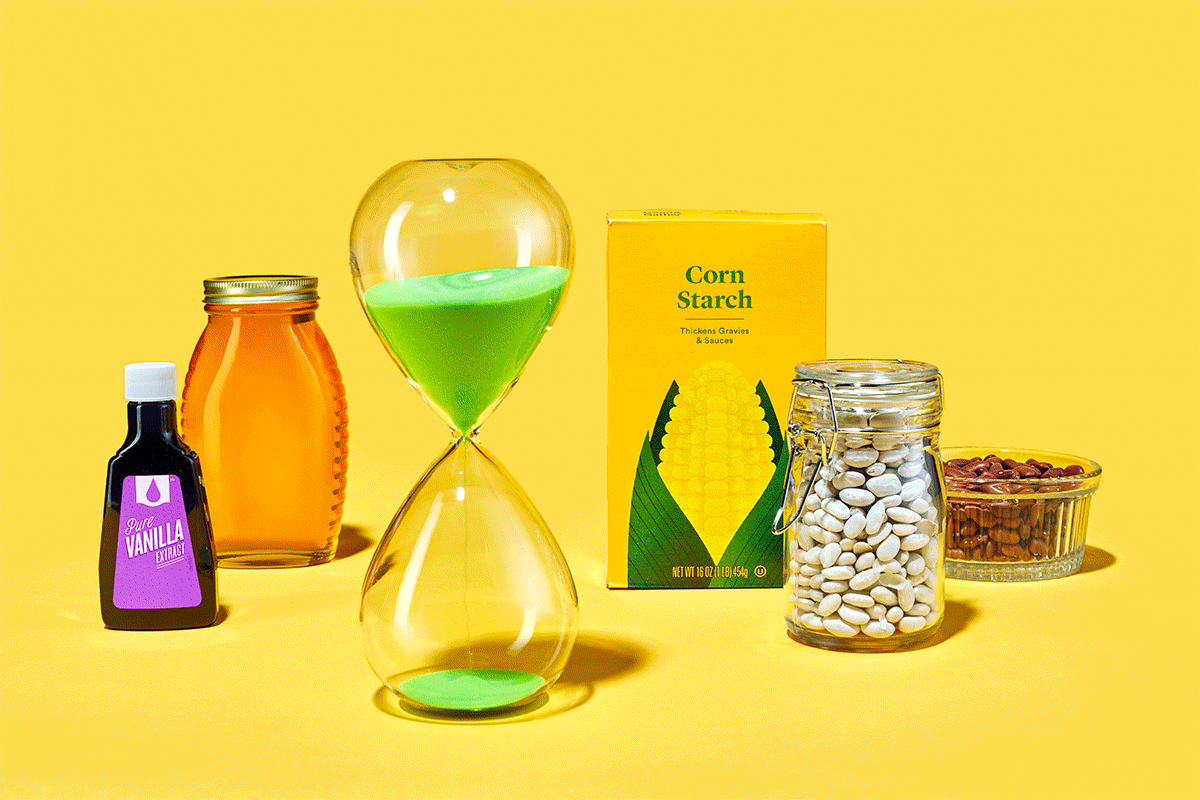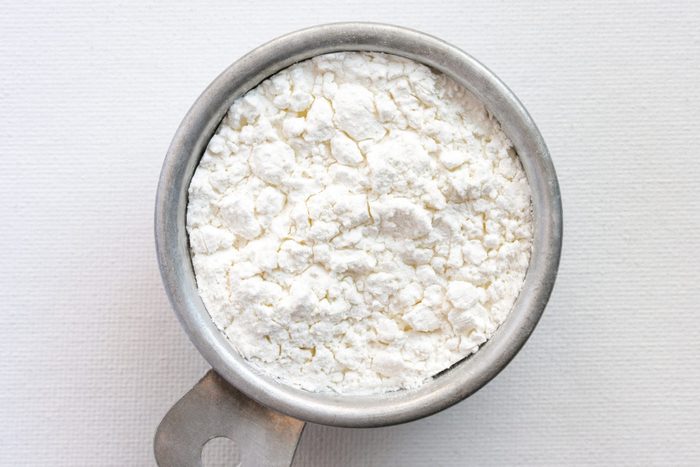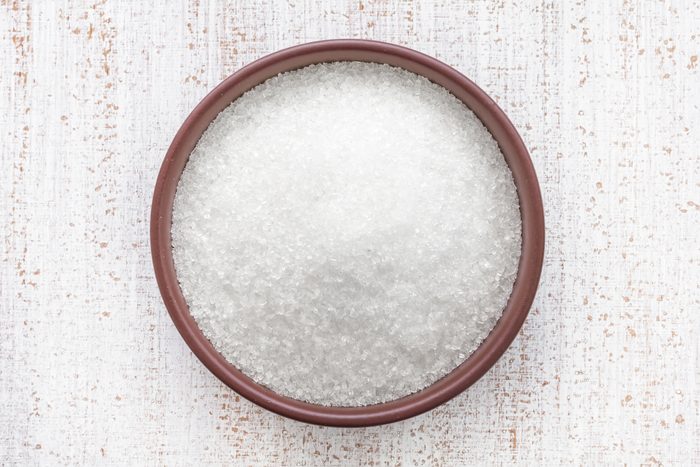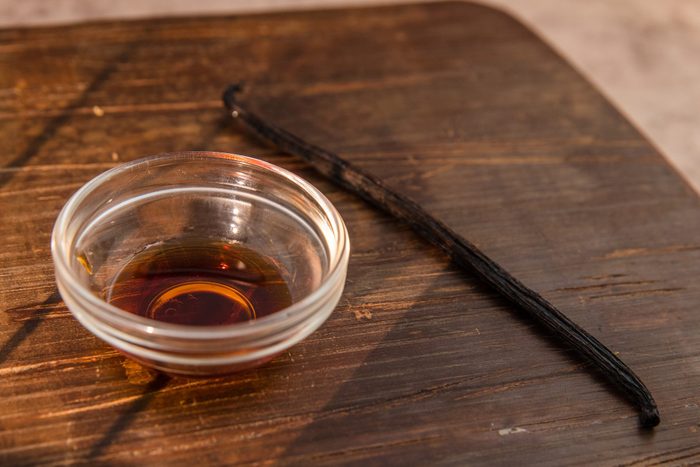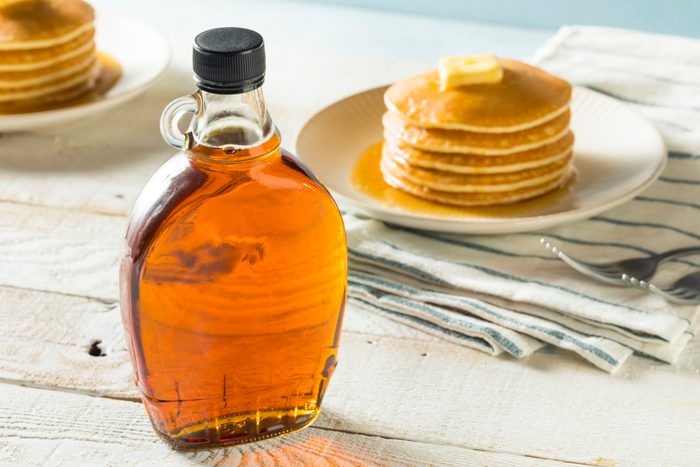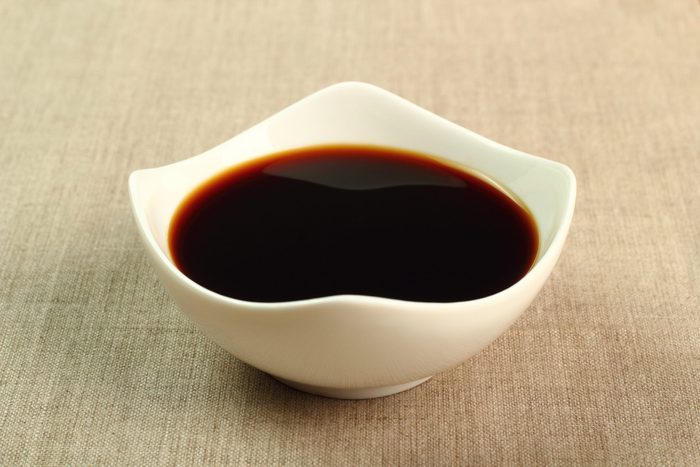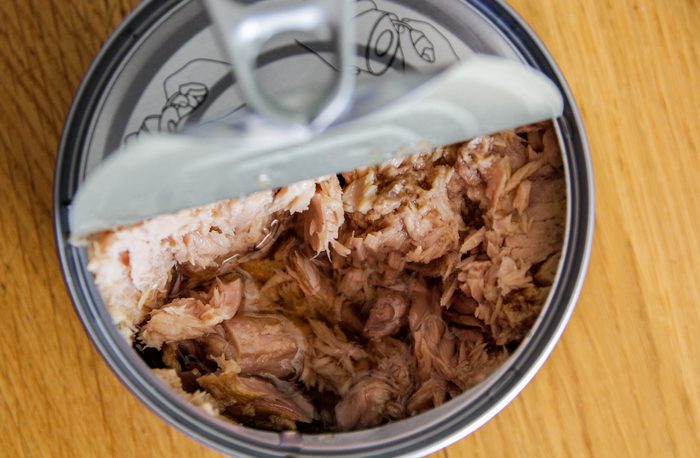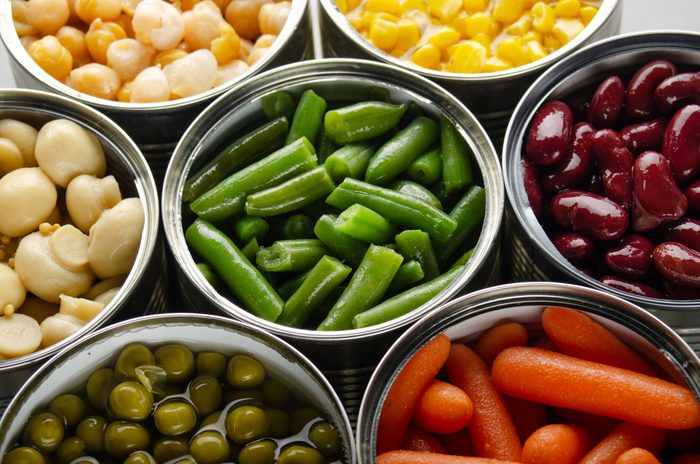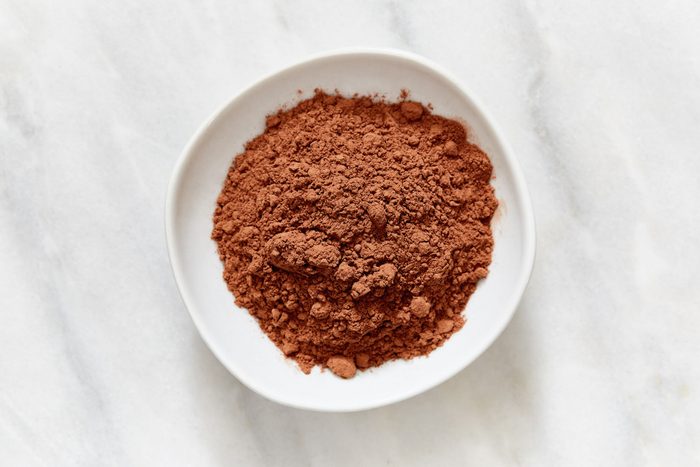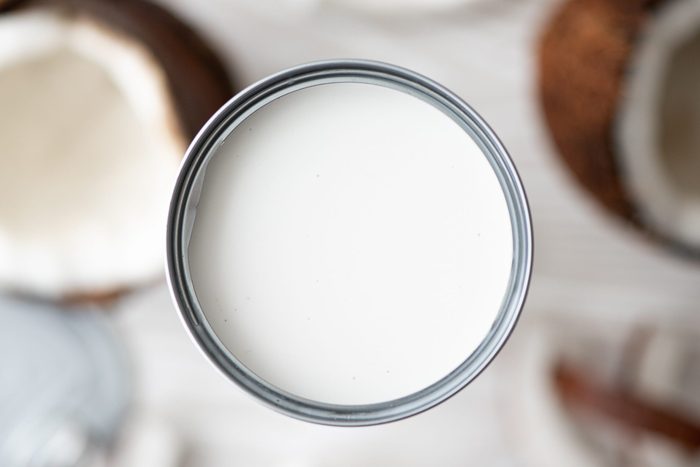BURCU ATALAY TANKUT/Getty Images
Dark, sweet, syrupy molasses is a must for many holiday baked goods, and you can also add it to baked beans and barbecue sauces for a solid punch of sweetness. Unopened molasses is fine for a full year at room temperature in a dark, cool place, according to the USDA. Once opened, it doesn’t need to be refrigerated, but you should use it within six months for best quality. FYI, if your molasses is exposed to heat or humidity, it may get moldy (it will look barely slick or visibly fuzzy on top) or the jar contents may separate. If this happens, toss it.
OlenaMykhaylova/Getty Images
Cans in good condition—meaning no dents, swelling or rust—stored in a cool, clean, dry place are safe indefinitely. We’re talking corn, peas, carrots, green beans, asparagus, peaches, pears, pineapple and so much more. Canned foods do have best-by or use-by dates, but the timing is linked to peak freshness, not safety, according to the Can Manufacturer’s Institute. High-acid foods such as tomatoes and pineapple will retain peak quality up to 18 months. Low-acid foods, such as meat and veggies, go even longer without sacrificing taste or texture, ringing in at two to five years. When it comes to fresh produce, this is how to store fruits and vegetables to keep them fresh for long.
And, of course, you can do a lot with those ingredients, especially when you mix them with other non-perishable food. “Canned tomatoes are a great base for soups and sauces,” points out Seymour. “Rice and beans together provide sufficient amounts of essential amino acids for complete protein, and they can take you all over the world from a culinary perspective.”
Pasta is certainly one of the most versatile non-perishable foods, because it can be enjoyed in a wide variety of ways, from traditional Italian food to casseroles, frittatas and soups. Per the USDA, it can be stored in a cool, dry pantry for two years with no fear of it degrading, though after that, it might start to get stale and have a musty, “off” flavor when cooked. Tiny insects can also make their way into still-sealed packages, even if your pantry is super clean. So if your pasta is on the old side, check the water after you add the noodles.





















